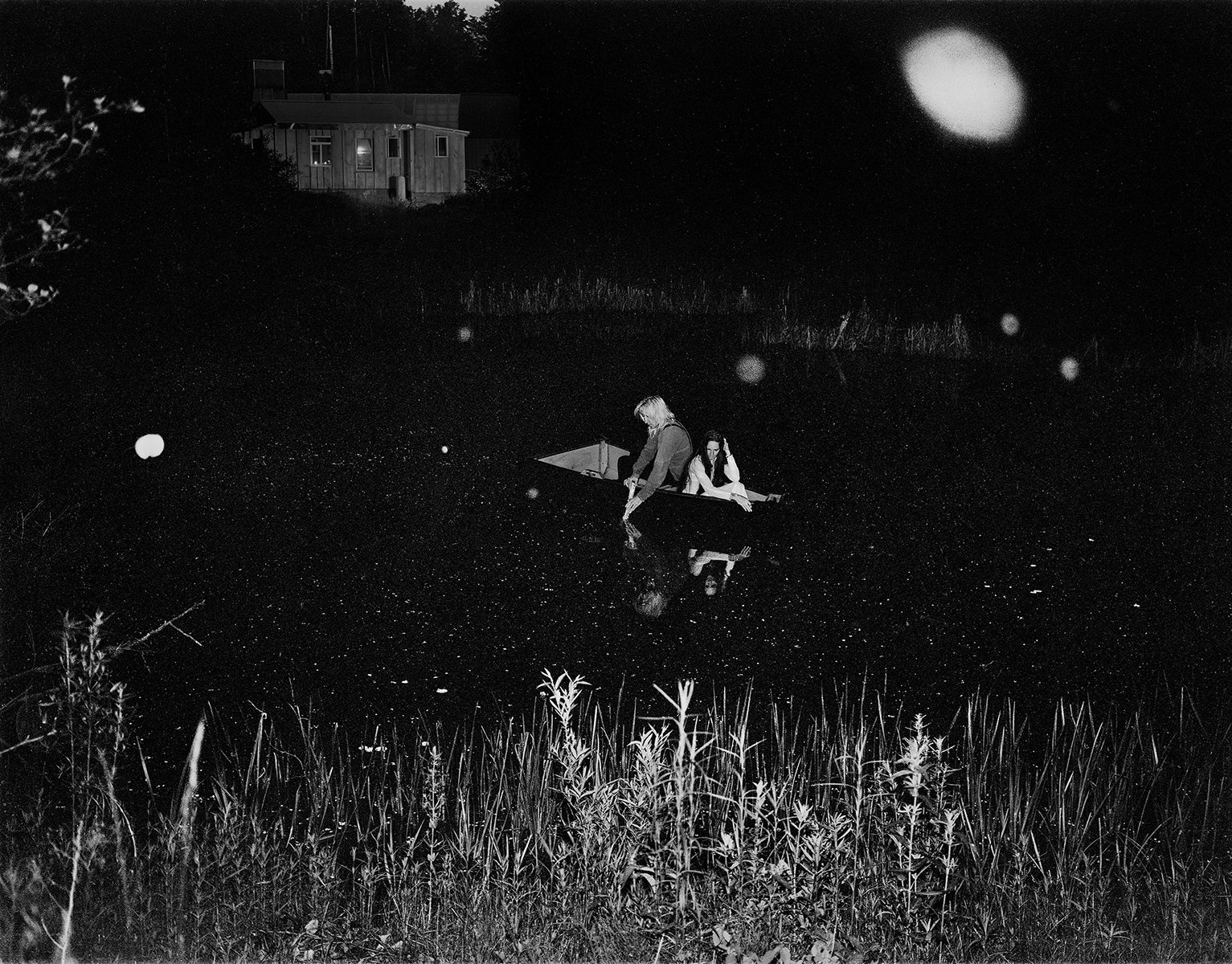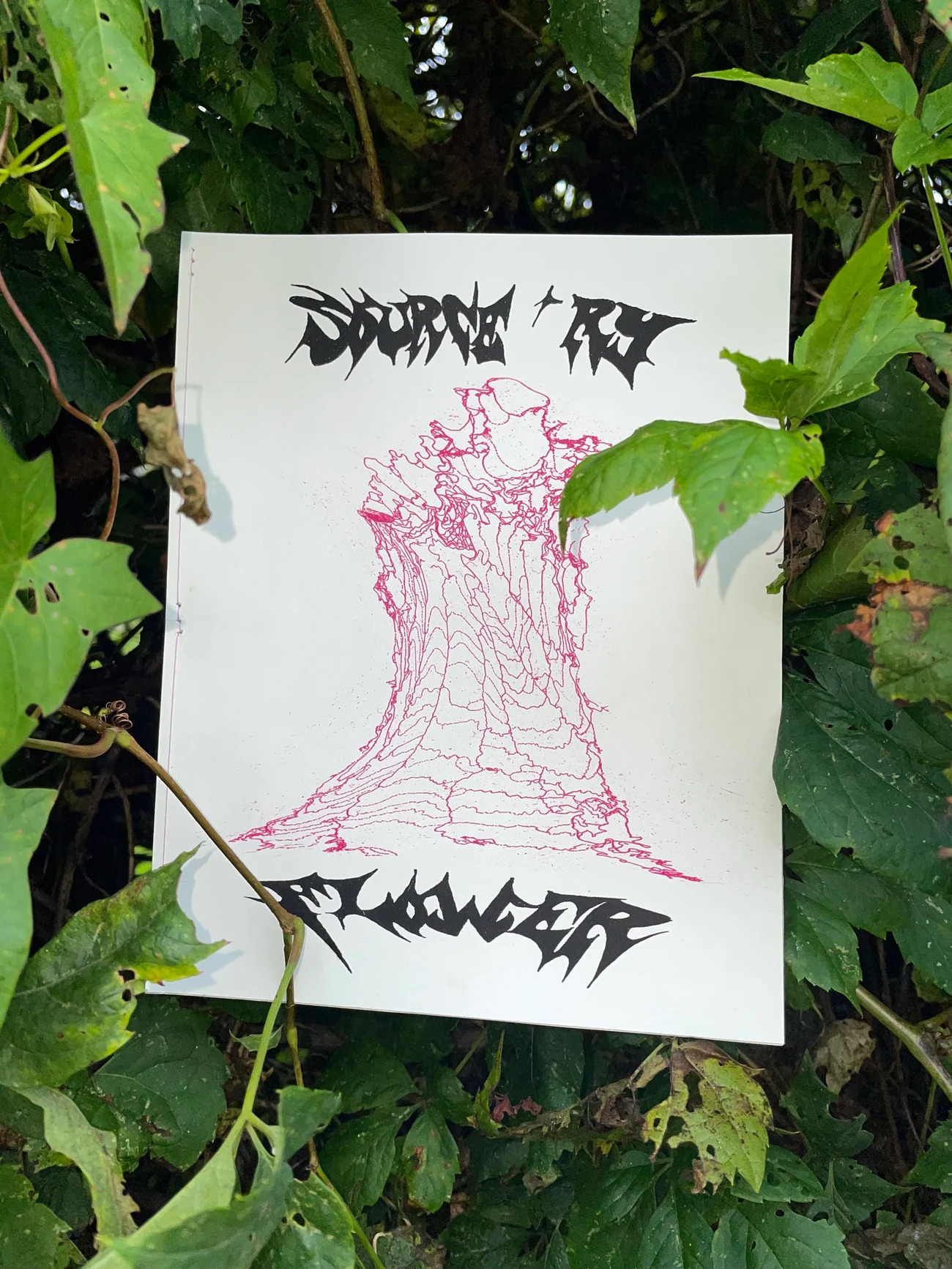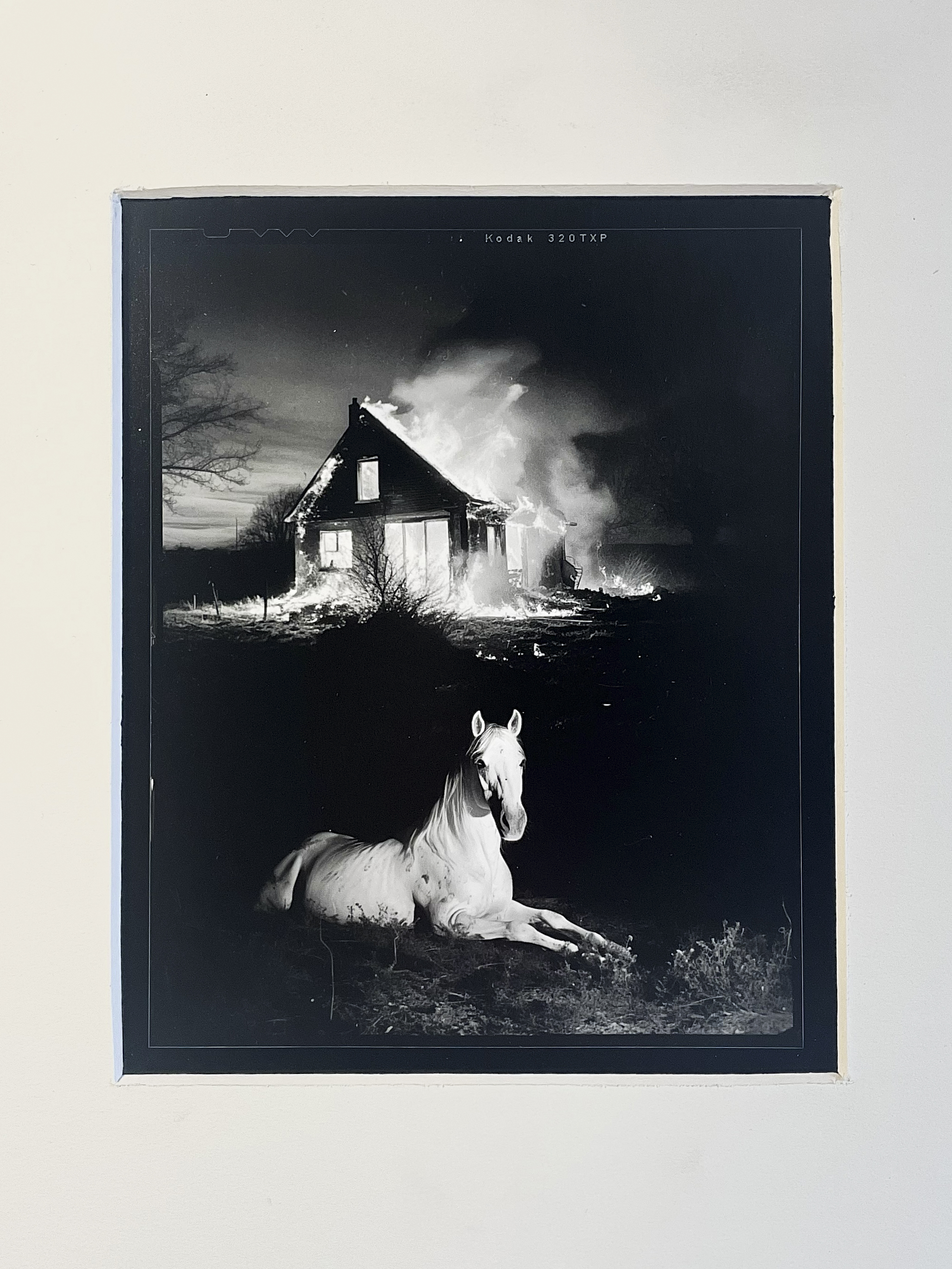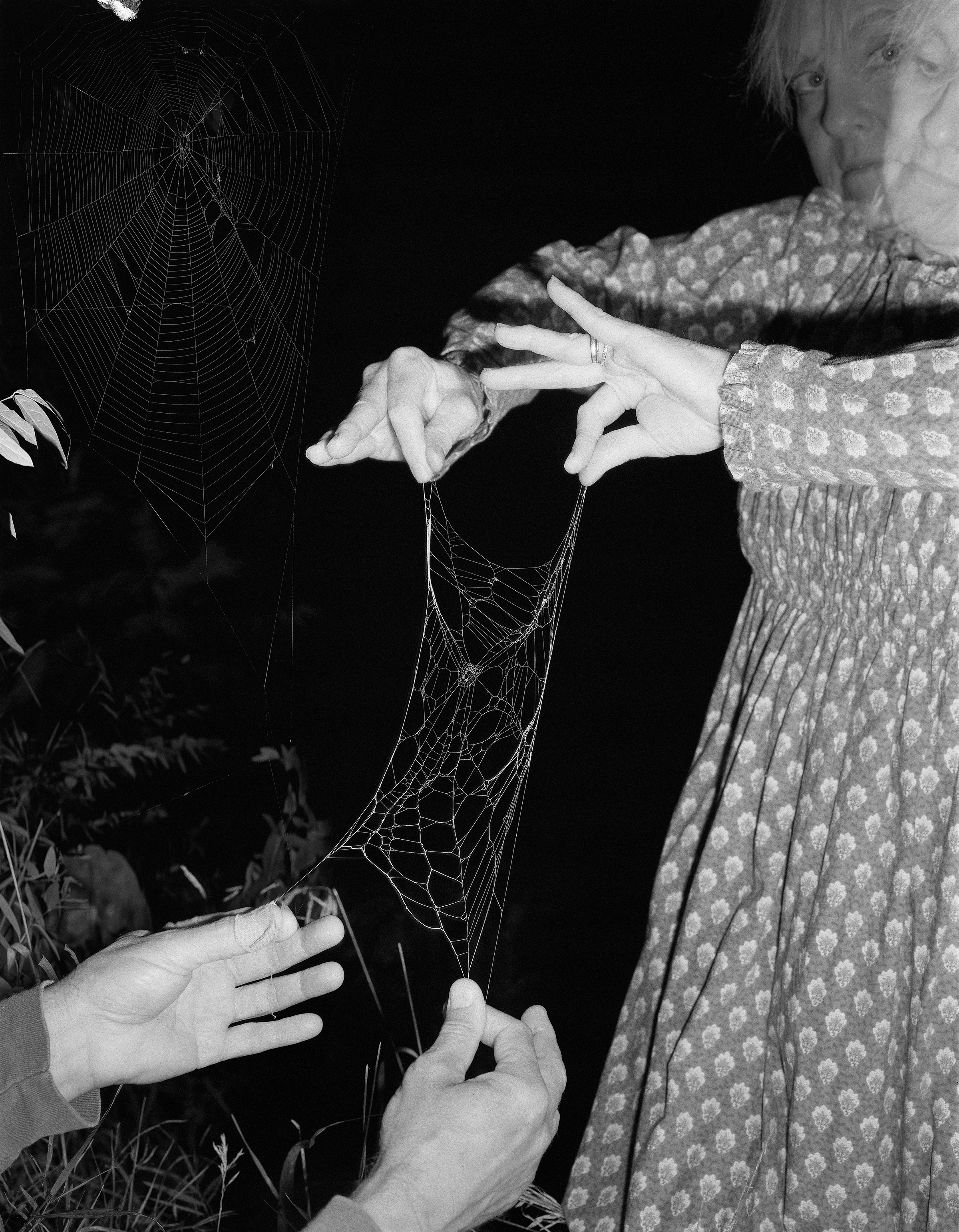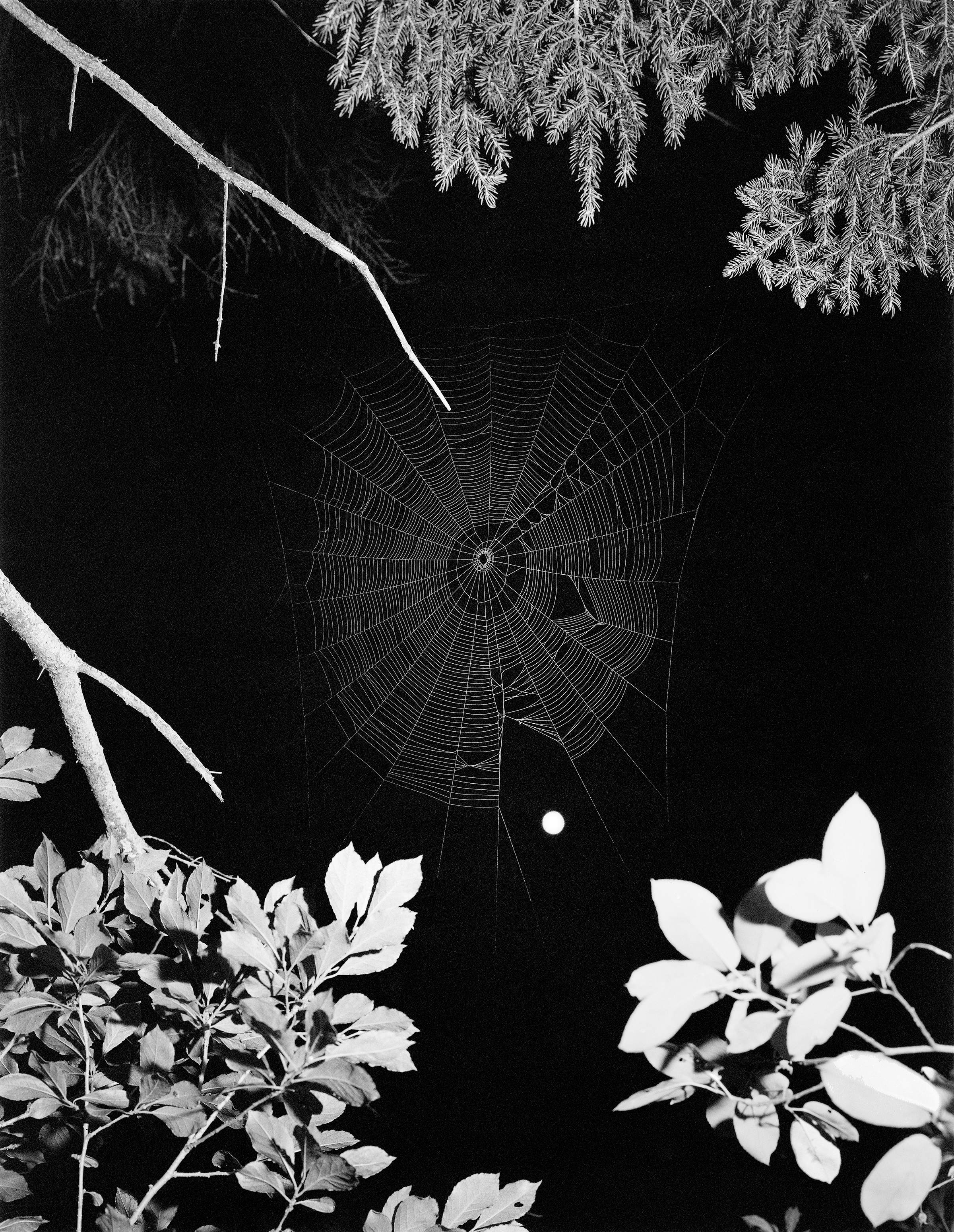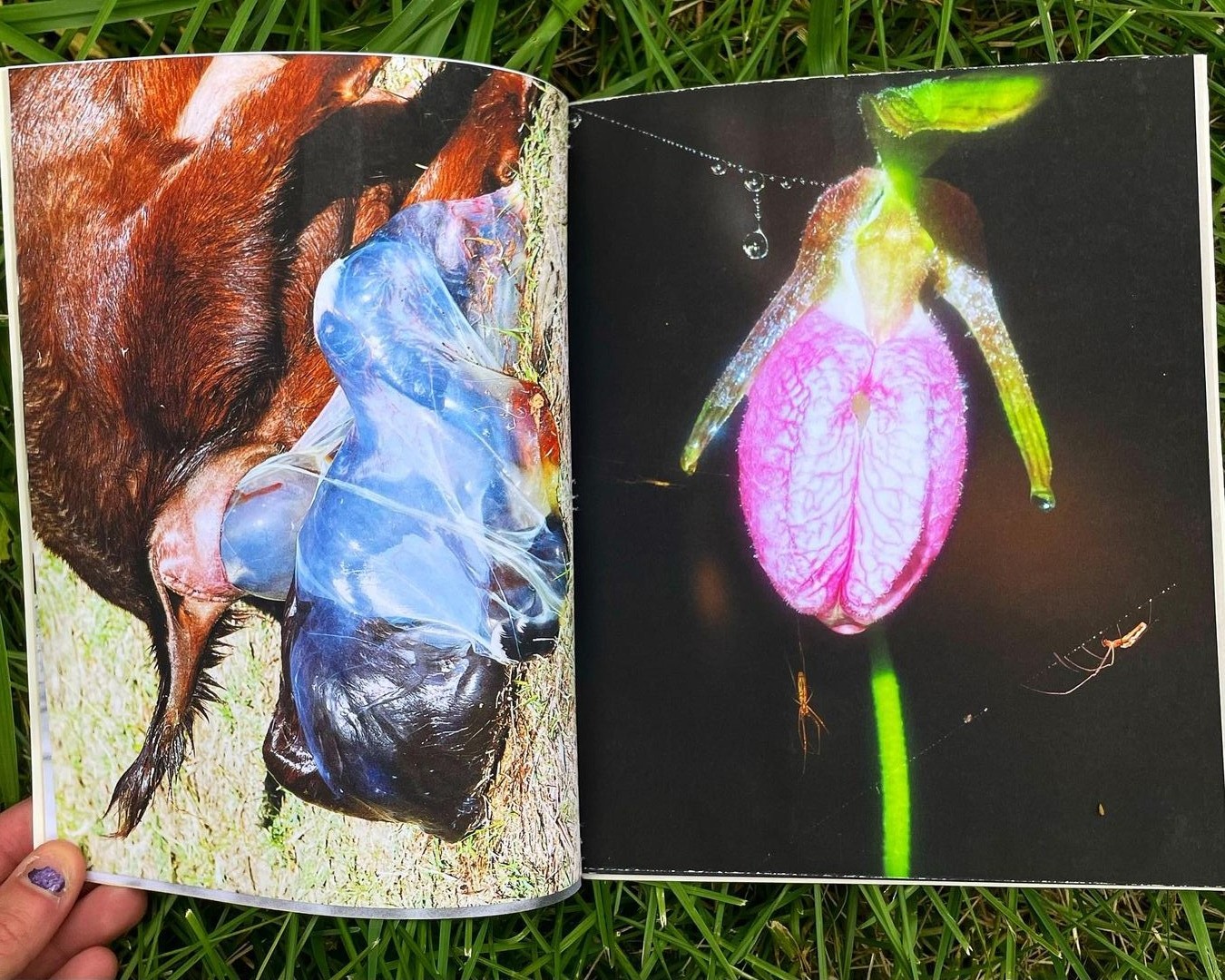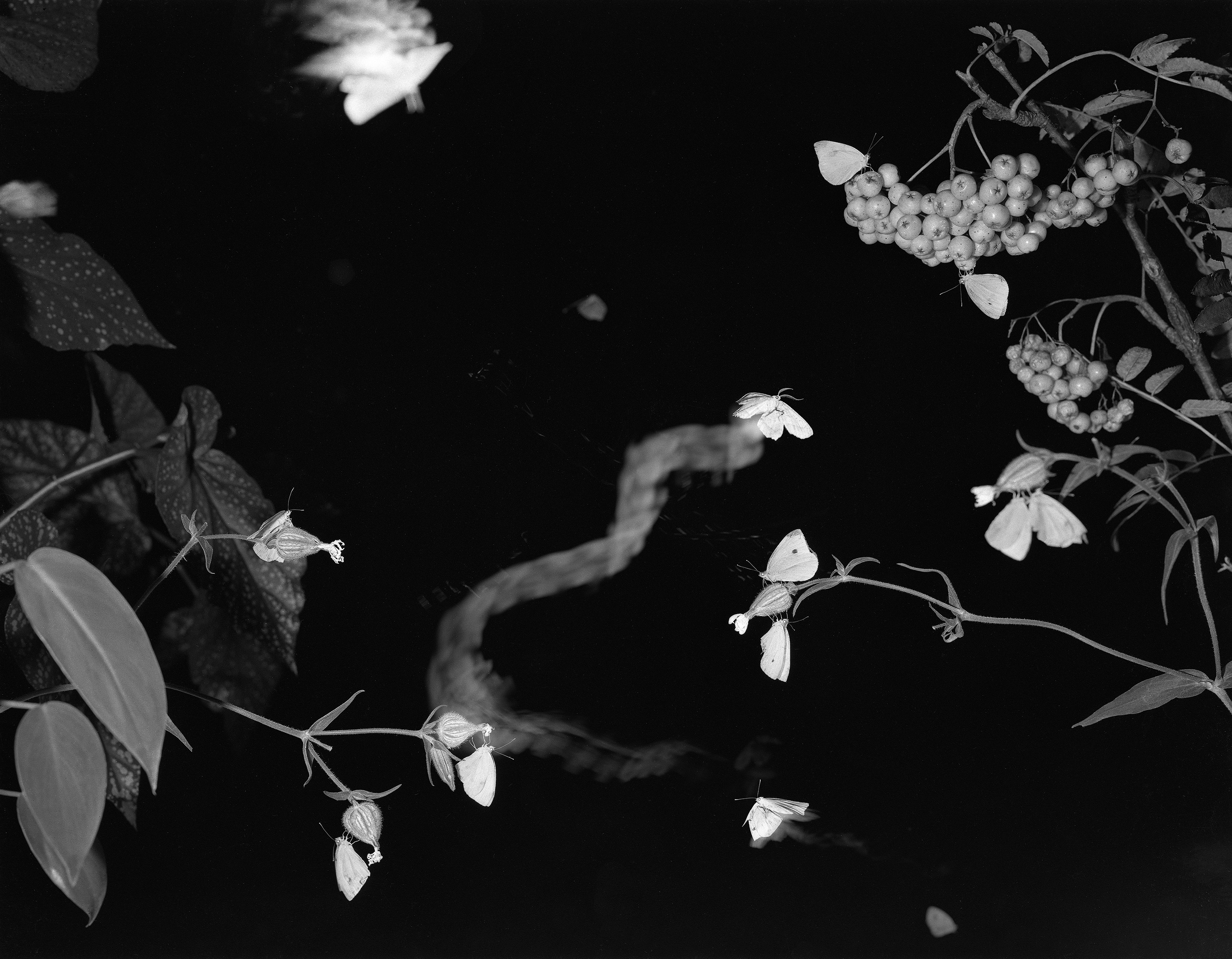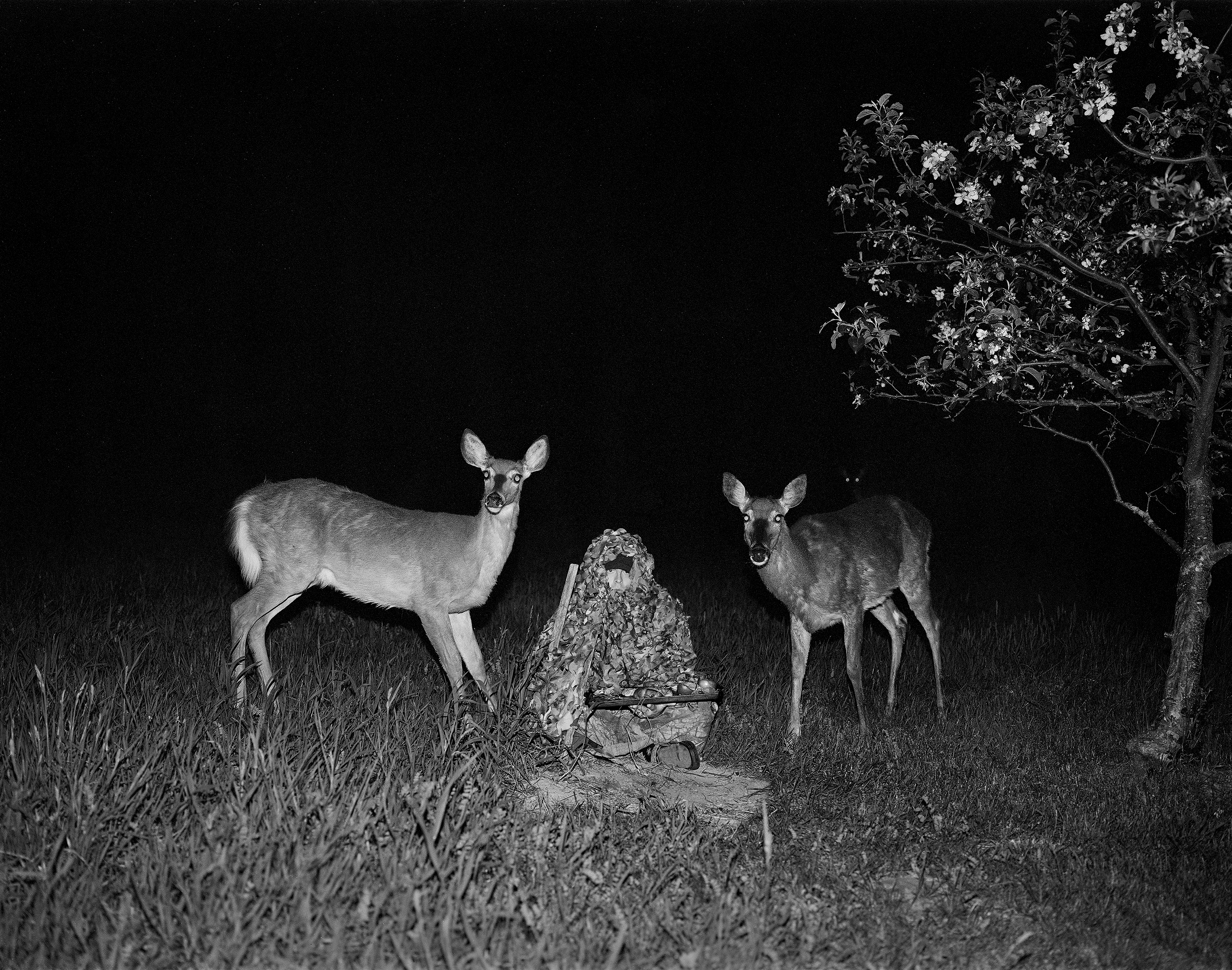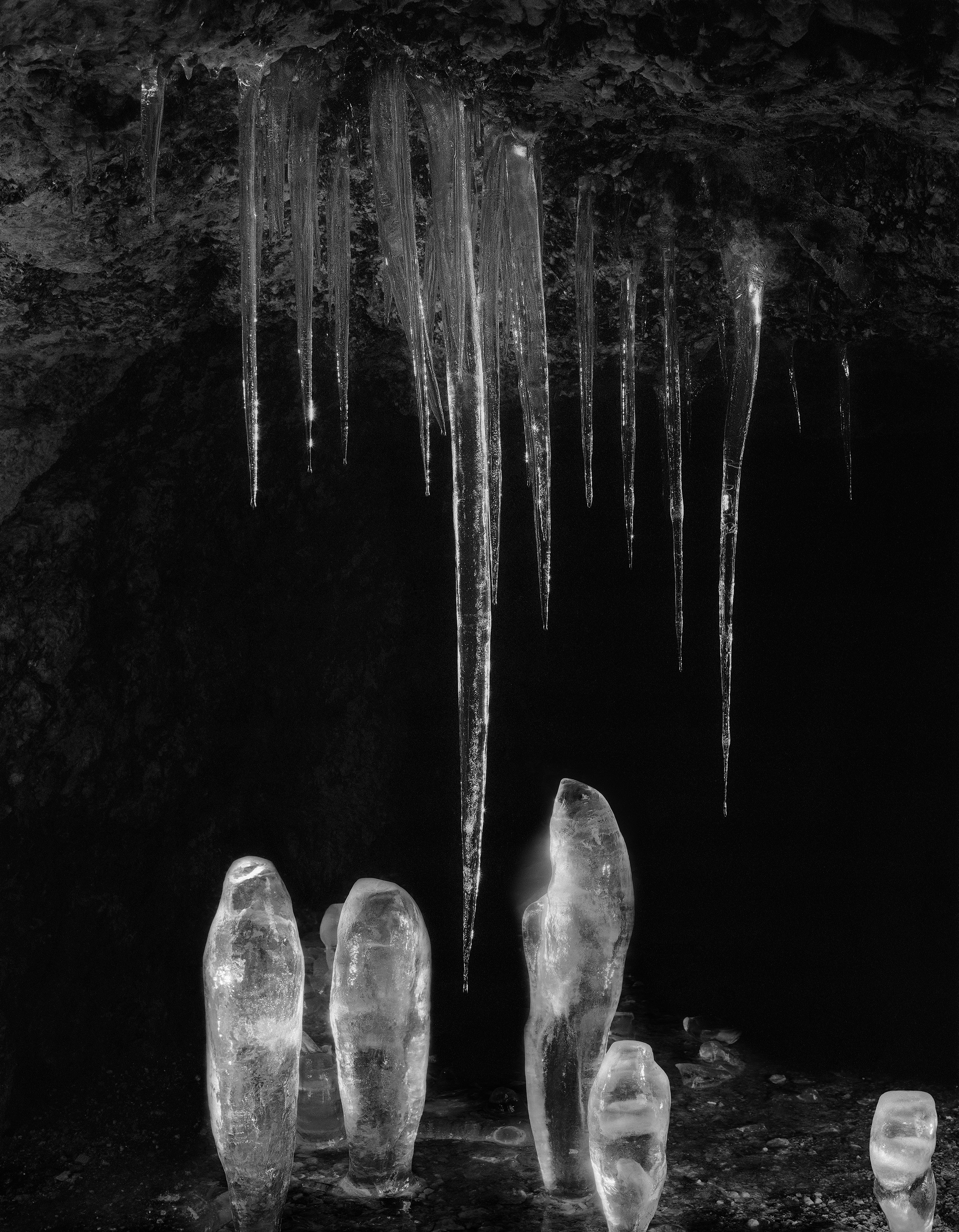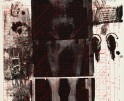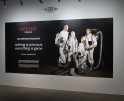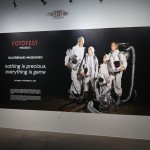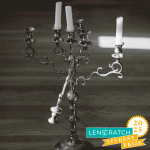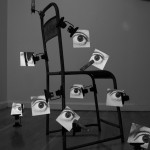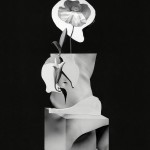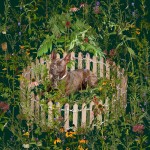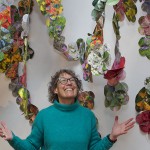Interview with Peah Guilmoth: The Search for Beauty and Escape
In her recent work, charting the path of her transition from pre to post-HRT; Peah is looking for beauty, escape, decay and blossoming in her surroundings seen through the guise of family, friends, and the rural landscape she inhabits. Within the harnessing of beauty is resistance to a world often at odds with joy and perpetual growth.
“The last portrait I made is of my mom last spring holding a spider web I gathered from an apple tree. She is staring at me in an anticipatory way. I held the shutter open so I caught her face glancing back down at the web. That weekend I spent with my parents I was hoping to tell them I was in the midst of transitioning, but never found the right moment. After developing the portraits of them, I saw how their gazes were attempting to figure me out: why was my skin so much softer, why did I suddenly look younger, was their offspring something other than what they had known her to be.” – Peah Pauline Guilmoth
I was first introduced to Peah’s work several years ago through her book, At Night Gardens Grow, which totally altered the way I viewed photography. It’s such an incredible collection of images and was super formative in my development as an artist. I’m really thankful to have gotten to know Peah since and to call her a good friend.
Her new work is stunning and I continue to be so inspired by all that she does.
Starting off, can you talk a little bit about music and how you use it as your primary source of inspiration?
Yeah, so my influences have always fluctuated, but music has always been the staple. It’s there all the time, and in the studio, it has to be really specific, or else I can’t get into a flow.
Up until maybe last year, I would have said that black metal was what I was most passionate about. I still do love it, but recently I’ve been on a really intense hyperpop whirlwind *laughs* I’ve been listening to so much of it.
So, the mood in the studio went from atmospheric, dark ambient black metal, to a lot of hyperpop. The mood has really shifted, and I don’t quite know what that’s really about, I think that it has to do with my mental state. I feel like recently, when I’m having a really hard time mental health wise, I’ve been gravitating towards hyperpop. There are so many happy noises in it, like chimes, bells, and all those super computer-generated effects happening… oh, and a lot of auto-tune. That’s really been a sort of therapeutic thing for me lately.
Do you think the hyperpop influence coincides with shooting more in color recently? I was curious about what spurred that.
A lot of the hyper-pop artists I listen to are trans women or trans fem. So, I think that’s been a big thing for me lately, especially as I’m starting HRT. Finding other artists that are trans, even if it’s not of the same world that I’m trying to make, has felt really important.
My images haven’t changed a whole lot, they’re still very much moody landscapes, spiderwebs, and have this sort of southern gothic look to them. So right now, I would say the music isn’t really part of the world I’m building, whereas the black metal and the ambient were, and really resembled the aesthetic. I don’t think the work really looks like hyperpop.
There’s a lot of color in that new zine [Sorce’ry – Flower], but it’s like the first time that music hasn’t spoken to the work I’m making. It’s sort of just speaking to my brain, rather than the images themselves.
Has anything filled that void left by music?
Yeah! I’ve been writing a lot lately, and I’ve gotten a typewriter. I’ve been doing sort of… I wouldn’t say I’m making poems or stories even… but I’m doing experiments with the way words look on a page.
This is just for me, and what I do when I’m not making photos, the repetition of it just sort of helps my brain. It’s kind of like finding words that visually look really nice together, and coming up with some kind of absurd formula for them that makes no sense.
It relates to my interest right now in embroidery. Which I’ve been really inspired by, and I’ve been doing a lot of lately. So far it’s just been doing some basic cross-stitch patterns, but I’ve been trying to use text in a way that, from afar, looks like an embroidery pattern. A lot of them have more depth and mean something due to the words, but they also just look nice on the page.
What else have I been doing… I’m kind of really messing around a lot right now *laughs*.
I think something shifted when I started HRT last winter [January 2023].
Since I started that, there was this thing that happened… I was living in rural central Maine, and I started to feel pretty unsafe carrying a camera through the world, especially in that area. The places I would normally feel comfortable wandering around with a huge camera, and maybe talking to people and asking for a photo, became really daunting to me. I think that coincided with starting hormones and telling myself that I no longer wanted to present in the way I had before. It just felt bad, and I used to be able to code-switch in a way so that when I would go out to shoot in a rural place, I’d look extremely butch so no one would harass me. But there was a point where that became something I no longer wanted to do, and it has also really affected the way I make photographs.
So yeah, I hardly shot this past year. I wouldn’t carry my camera around, it was basically just me making something in my backyard with spiderwebs, or photographing my mom or a friend. That’s kind of continued into now, I don’t use a camera in the way that I used to. It’s very much me making photos only where I feel comfortable.
Recently though, it became a blessing in a way. It’s harder for me to make the work I had been making before, but I know I still want to make it. So now, I just have to try extra hard and put more effort into creating in this new way. I don’t have a lot to show yet, but I feel like it’s going in a good direction, and I have a lot of ideas for when it starts to get warmer again!
Do you see a way for these new mediums you’re working with to come together?
Yeah, I do actually! There’s this artist I really like, Aspen Mays, and all of her work is in the darkroom but not photographic… it’s like cameraless photos.
But, especially this winter, I’ve been thinking about how I can combine my obsession with patterns… and not necessarily embroidery, but doing things that feel like that. Like just really repetitive things.
Something I just started making is this microscopic image of wood grain, that looks like a piece of fabric from afar. I printed it out really huge and pasted it to a piece of paper, and right now, I’m just painstakingly poking holes. Both in the paper it’s attached to and the photo itself. I’m basically poking out the negative space of the wood grain with tiny little needles, and my plan is to put it on a piece of darkroom paper and expose it.
But yeah, things like that. They feel like desperate attempts to find a way to meld my obsessive nature with little details into something kind of photographic *laughs*.
That sounds so exciting! Thinking more photographically though, how do you see your new work in relation to what you’ve made in the past? Like is it in relation to At Night Gardens Grow in any way, or is it something entirely separate?
I feel like all the work I make is kind of from the same world. It always comes from a very personal place. There’s never been a concept, theory, idea, or movement that I’m trying to make a body of work about. It’s always just like me making photos that come in response to something I saw… or just images I shot through sprinkling photography into my daily life. So the work tends to be less about an idea, and more about what’s happening in my personal life at the time.
When I look back on At Night Gardens Grow, I don’t even know how I managed to make that book. I started making it in western Massachusetts, and then moved to Peaks Island in Maine, all while I was working as an elderly caregiver. I was working more hours than I ever had in my entire life, and I don’t think I could do that now, I’ve definitely slowed down. I’d work from early in the morning until 6 o’clock at night, come home, eat dinner, and then somehow still make work all night.
That’s how I think about my work though. I had a pretty intense job caring for an old 90-year-old man in the middle of nowhere, but somehow found the drive to take my camera out after that. All that to say, the ideas behind my work fluctuate between each picture too, and what I’m going through that day or in that span of time. It’s always about escape too.
Photography, especially during that period, was an escape for my brain. I needed to try to get out of being a caregiver and do something that felt spiritually good. So that would be like going out onto a river with a bunch of spider webs I had gathered *laughs*.
We kind of touched on it, but is there more of a reason as to why you’ve been exploring color with some of your recent work?
I honestly couldn’t tell you. It’s obviously a different way of getting at emotion, and with color, it’s about adding that extra layer to a photo or sequence.
With that zine too [Source’ry – Flower], I was sequencing based on form, but I would also make decisions off color. Having both be a part of the emotional story I was trying to tell just adds something.
I also don’t really shoot color film; I have a really crappy 10-megapixel point-and-shoot camera that I take a lot of color photos with. That’s actually the only camera I really carry around with me now. There are pictures of my friends on there but also loads of images of fun abandoned houses that I find, and have like cool colored wallpaper or something *laughs*.
It’s an economical decision, but I also just love what color can do emotionally.
Do you plan to continue mixing color and black and white moving forward?
I think the next book that I make will either be like At Night Gardens Grow, black and white and very uniform in its layout, or it’s going to be something where it’s like, color photos and a lot of found photos. Basically just super busy… and every page filled up by collaging found photos, the digital photos I take, and weird experiments that I’m doing in the studio.
I feel like with how you present your work, especially online, there’s a big emphasis and distinction on how it exists as photographs versus a “book” or “object.” So, I was curious about how you think of your work existing as an object, it feels like a really meaningful and specific way of positioning it.
Yeah, absolutely. I think I do make two different types of work. One is photographs that are probably going to be printed out in a digital way, where it’s very much about the image and what’s happening in it. I feel like objects can have multiple things to them though, like it’s not just the way it looks, but it’s also about the texture and the material used.
I come from a family of antique dealers and have grown up always loving old objects. I think recently that has turned into me being more fascinated with the textures of the objects and like how time, weather, and age can affect a piece of paper or the surface of something.
It’s still not something that I’ve fleshed out or fully found what I wanted to do with yet, but I’ve been thinking about it and experimenting a lot.
Thinking back to how you mentioned working with a typewriter and writing more, do you plan on incorporating more text into your work?
Yeah, I think with that book I was talking about, the one that’s sort of just collaged imagery, I’d like to figure out how to put text within that too. Maybe not text that explains anything, but more experiments that I’m working on. Text that functions more as objects and visual elements than anything else.
I feel like a lot of your work is great in isolation and without any accompanying text or explanation. I really appreciate your titles too, I think they put you in the headspace to experience the work with limited context, they’re so evocative, especially At Night Gardens Grow. Can you talk a little bit about your process for titling?
Totally! The work [At Night Gardens Grow] is definitely a little cryptic *laughs* I considered including some writing, like an essay at the beginning, but I ended up deciding against it. I think a lot of text that comes in books nowadays can be a little too explanatory or theory-driven, which doesn’t feel authentic to me and my work. I also really wanted people to make of it what they will, without any overt narrative or story.
As for the project titles, they’re pretty simple in how I get to them. This to me [At Night Gardens Grow] is all at night and a lot of it was made in and around gardens. Whether it be around the house, or like a metaphorical garden since there are a lot of natural things blooming and growing. So, it was just a lot of looking at what’s in the book really *laughs*. I feel like if someone were to come and see the naming process, they might think it’s kind of silly. It’s really just me playing around with words and looking for something that has a nice sound and doesn’t give away too much.
There’s also an immediate emotional gut response that needs to happen from the words themselves.
Does your connection to music play any role in the process? Like in terms of maybe lyrics?
There are actually some ambient artists! I just love how they title.
There are no words in the songs, so the titles direct your experience with the music in a way since there’s nothing else in the song to build a narrative. It’s just an instrumental experience, and that’s one of my favorite parts of listening to music without words in it. Like constructing the narrative just off the song title. Sometimes it’s just a cryptic connection that can be made, and that kind of dichotomy inspires how I title, trying to encapsulate a feeling in only a few words.
I love Anna Roxanne, Grouper… oh and Brian Eno! My favorite album of his is The Mixing Colors. It’s all piano, and there are some synthy swells that happen throughout it, like textures almost. Every song is just a name of a color, and there are no lyrics or anything, you just have the name of the color… I think they made the music in response to the colors, in a sort of synesthesia way. It just makes a lot of sense, that album really figured out how to make the sound of a color.
That idea of, how you encapsulate a feeling in a very abstract way, is so interesting to me.
It’s not as droney, but do you know any of Mort Garson’s music, like Plantasia?
I love Plantasia! That very much makes sense with the way my brain works and how I think about visual art. Like, it’s music for plants *laughs* it’s the best.
It also predated and paved the road for a lot of music, like the soundtracks for the Legend of Zelda series if you’re familiar with that.
That makes total sense, I love Zelda! Ocarina of Time is the best game ever made, plus the soundtracks are so good.
Old video games are a huge inspiration, I think about them a lot. It’s not formed enough to necessarily directly connect to my work though, outside of this need to escape and this nostalgia I have for them.
I mean that’s what got me into the genre of music dungeon synth and old RPG games, even though I never really got obsessed with them. I just sort of love the idea of them, and that form of escape.
On that topic, since we talked about how you draw inspiration from so many different mediums, are there any video games that have shaped your practice?
That’s a good question, I guess like… Resident Evil 4? I played that a lot when I was younger, and that game is really important to me, I think about it a lot.
Oh! Unrelated, but popped up when I was thinking about video music and other musical influences, Enya! She’s very influential in terms of how I treat my artwork and the emotional landscapes I like to build. Dark Sky Island, all of her albums are amazing, but that one in particular is probably one of the most influential albums for me in terms of creating beauty. Not so much out of lyrical content, but instead the way her voice sounds. Black metal tends to do that too, like you don’t know what they’re saying, but it still emotes something.
With Enya’s music, the words are audible, she’s telling you a story and there’s a narrative, but I’ve always listened to it and almost glazed over what she’s saying. To me, it’s about the way her voice is drenched in reverb, it becomes this almost cacophony like… it’s like a religious experience almost. There’s no reason behind it, it’s just art that’s made purely for beauty, and I feel like I take that into my work a lot too.
Sometimes I don’t care what it’s about, I just want to make something pretty because it feels good, it’s like an escape. So that sort of model of making, beauty over narrative, beauty first.
Wrapping things up, is there any other new work that you’re excited about or want to talk about?
Yeah, what I’m making is a continuation of where I left off with At Night Gardens Grow. Just making things that I find beautiful.
I think, even more so with the new work, it’s about an atmosphere. It’s less so about a human narrative and more about texture and shapes. I’m photographing a lot of spider webs as always, like manipulating them, putting them in water… there are a lot of pictures of this cave I go to in New Hampshire too, lots of waterfalls, just very nature-heavy imagery as always.
At least in my brain, it’s about beauty and identity.
Alongside just trying to make something beautiful when life feels not very beautiful at times. Making work helps me find beauty in my life and appreciate what is here.
Peah Pauline Guilmoth lives in rural “maine” on unceded Wabanaki territory. She makes work thinking about gender, ritual, class, dysphoria, euphoria, beauty, and relationships to the land. Peah uses large-format photography, sculpture, and collaged found ephemera gathered while wandering around. She likes spending time in abandoned houses and sitting in dirt.
Follow Peah:
Jake Benzinger (he/him) is a photographer and book artist based in Rockland, Maine; he received his BFA in photography from Lesley University, College of Art and Design in Cambridge, MA. His work explores the intersection of dreamscape and reality. Through the dislocation of space, he weaves together imagery to construct a world that exists in the liminal, investigating themes of duality, longing, identity, and the natural world.
His work was recently featured by Fraction Magazine, and has been exhibited both nationally and internationally. Jake’s body of work, Like Dust Settling in a Dim-Lit Room (Or Starless Forest), was recently self-published, shortlisted for the 2023 Lucie Photo Book Prize, and sold out of its first edition of hardcover books. A second edition was released in late 2023, coinciding with a solo show at the Griffin Museum of Photography.
Jake is currently a gallery assistant and workshop coordinator, a content editor for Lenscratch, and the founder/lead designer at wych elm press.
Follow Jake:
Posts on Lenscratch may not be reproduced without the permission of the Lenscratch staff and the photographer.
Recommended
-
Ricardo Miguel Hernández: When the memory turns to dust and Beyond PainNovember 28th, 2025
-
Pamela Landau Connolly: Columbus DriveNovember 26th, 2025
-
Interview with Maja Daniels: Gertrud, Natural Phenomena, and Alternative TimelinesNovember 16th, 2025
-
Robert Rauschenberg at Gemini G.E.LOctober 18th, 2025
-
Hillerbrand+Magsamen: nothing is precious, everything is gameOctober 12th, 2025

